Every once in a while I see interesting bonsai with extra-interesting features. One of the more common is the extra-long branch. A white pine that fits this description caught my attention at last year’s Taikan-ten.
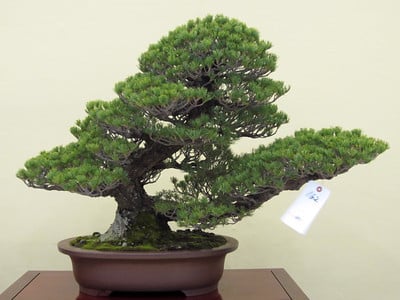
White pine – 2011 Taikan-ten
The first branch shoots straight out and then rises up, providing the tree’s primary point of interest. At the photo shoot for the 2012 Meifu-ten, trees with similar features caught my attention.
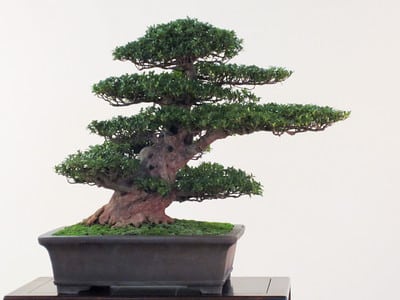
Satsuki azalea – 2012 Meifu-ten
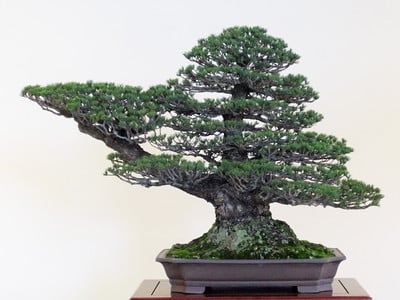
White pine – 2012 Meifu-ten
Not long after noting the white pine above, Peter Tea and I turned around and spotted the pines below.
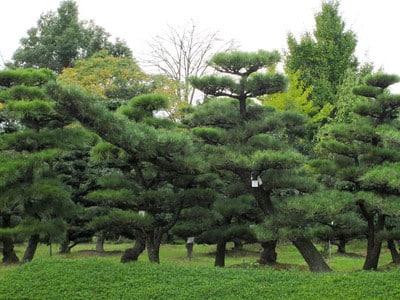
Garden pines
Clearly, something’s up here. The question in my head today – what role do extra-ordinary branches play in bonsai? Do they add spice to bland exhibits – or are trees better off without them? Peter does a good job plumbing the issue in his recent post on The Strange Trident Maple.
I was on the fence about whether or not to call attention to the primary branch on the pine below until I realized it pretty much emerges below the start of the nebari at a bold 90 degree angle. More food for thought.
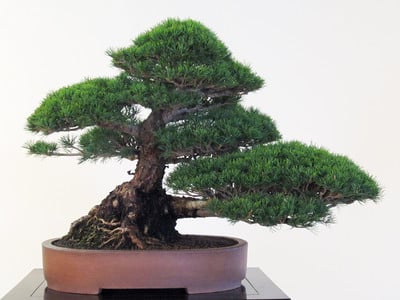
White pine – 2012 Meifu-ten – what would you do with this tree?
Subscribe to Bonsai Tonight
New Posts Delivered Every Tuesday and Friday
Mac says
What would I do? I’d cut that bottom branch off.
Roger says
I would like to see the base move slightly toward center of pot. Lean it further and start training for a cascad shape. Its hard to see the branch under the foliage bit it looks very thick so I might pick a strong branch and begin training it in an s very tight and let it become the leader as it progresses.
Bruce Winter says
I’d give it a place of honour on my benches.
Barry McD. says
Cry?
Jose Luis says
Jonas,
This style of elongated branch was particularly common in Pinus parviflora, var. Zuisho. The father of this species, the late Suzuki Saichi created a famous masterpiece bonsai known as the Great Dragon, which displayed the atypica elongated branch as its main focal point. I believe the tree is now defunct, but, in my opinion, this particular “style” can be traced back to Mr. Suzuki.
Warm regards,
Jose Luis
Jose Luis says
Jonas,
This style of elongated branch was particularly common in Pinus parviflora, var. Zuisho. The father of this species, the late Suzuki Saichi created a famous masterpiece bonsai known as the Great Dragon, which displayed the atypical elongated branch as its main focal point. I believe the tree is now defunct, but, in my opinion, this particular “style” can be traced back to Mr. Suzuki.
Warm regards,
Jose Luis
LeeBee says
Compensating
Bruce Winter says
The Great Dragon is in Bonsai Today #43. One of my all time favorite stories in BT.
kyriolexy says
The same kind of interest an ugly thing has, you cannot avoid to look at it but not always strange is interesting.Expecially for the first pine. IMAO